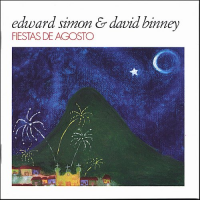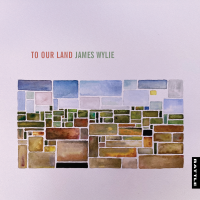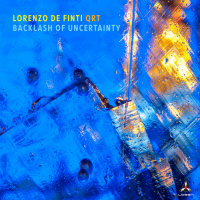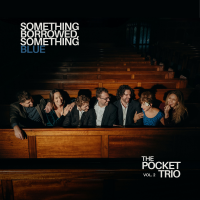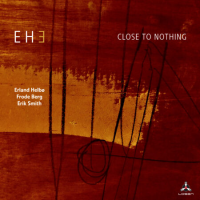Home » Jazz Articles » Multiple Reviews » Marvin Ayres: Neptune & Cellosphere
Marvin Ayres: Neptune & Cellosphere
Although, like some of [Brian] Eno
Since his early recordings, including Discreet Music and Music for Airports, Eno's vision seems to have grown legs, creating its own movement embraced by a larger body of artists. But the vast majority of those who have embraced Eno's vision seem to have missed the point. The lion's share of Ambient music today may have the hypnotic, trance-like quality of Eno's work, but it's often far too involving; demanding that it stay at the forefront of a listener's consciousness rather than become a part of his/her broader aural experience.
Then there's Marvin Ayres. Classically trained, but with a pedigree that includes being a founding member of The Government, along with contributions to bands including Culture Club, Simply Red, Frankie Goes to Hollywood and Prefab Sprout, Ayres is a tripled threat, playing cello, viola and violin. In fact, he's actually more than a triple threat because, while he plays the acoustic instruments, he also uses their electric cousins and, according to the liner notes to Neptune — one of two Ayres recordings released on Britain's Burning Shed — Ayres views them as distinctly separate instruments. He writes, "These are distinctive instruments from their acoustic counterparts, and do not sit happily as merely electric replacements. They have many advantages for a contemporary composer, which I have tried to exploit. Where their tonal range and response is limited, their microtonal quality and harmonics (that are normally virtually inaudible) more than make up for their 'natural' shortcomings.
And so, Ayres utilizes these instruments, along with looping and other techniques available inside and outside the recording studio, to create compositions that fit within the Ambient music purview. Although, like some of Eno's best work, the atmospheres Ayres creates can comfortably blend into the sonic backdrop, they are also compelling pieces of music that can dominate and transport.
 Marvin Ayres
Marvin Ayres
Neptune
Burning Shed
2004
Ayres' latest work continues to fuse his classical background with a more adventurous sonic ear, creating 10 pieces that explore the tonalities and textures of the electric violin, viola and cello. In some cases he layers one instrument, as in "Wave, to explore its seemingly infinite possibilities; elsewhere, as on the 17-minute "Drift, which is the centrepiece of the album, he combines all three, again multi-tracking and processing them to create a broader palette.
Some of the pieces work better as pure backdrop than others. "Breath, with its tranquil ambience, could easily operate beneath the consciousness or be treated as something more overtly hypnotic and, ultimately, relaxing. "Swell, on the other hand, is more percussive and effected, creating an odd conglomeration of sounds that would be very difficult to ignore.
Still, the overall raison d'etre of Ayres' work seems to be in creating moods and textures that are inherently restful. Whether they fade into the background, like the cello-driven "Tide, or demand more immediate attention from the listener, as in "Sea Minor — which, with its flanged solo cello, is more inherently demanding — Ayres' compositions never jar the senses. The dynamics and developments are so subtle that the shifts that occur throughout the album almost go by without notice — until your attention comes back from wherever Ayres has taken you, and you realize that there has been movement.
Ayres' music is transcendent, evoking images and emotions ultimately unique to each listener. This is not about melody, although there are short motifs that Ayres uses as a basis for his more textural explorations; this is not about rhythm, although Ayres, with the aid of looping, creates gentle pulses that ebb and flow. This is about utilizing music to evoke a mood, to provoke a gentle response.
Neptune is an enhanced CD that comes with two short films: a live performance of Ayres at the Camden Remix Festival, which demonstrates that, while he utilizes the studio to create broader pictures, he's able to use looping devices to recreate some of that ambience live; and a brief promotional film for the track "Under the Blue. For some reason these enhanced CD features require that the first track be silent, so when playing the disc, be sure to skip past it.
 Marvin Ayres
Marvin Ayres
Cellosphere
Burning Shed
Released 1999; reissued 2004
Cellosphere was originally released in '99 on the Mille Plateaux classical imprint, Ritornell. There are unquestionable links between Cellosphere and Neptune, with both exploring the seemingly infinite potential of blending strings with advanced studio techniques. But Cellosphere seems to work even more as an Ambient piece, three movements that are best experienced as a conceptual whole.
The sounds Ayres creates on Neptune, as processed as they are, could never be mistaken as anything other than string instruments. With Cellosphere, on the other hand, the textures bear little-to-no resemblance to the cello and violin that are the instrumental basis for every sound on the recording.
And yet, while the processing and remixing of the tracks by Ayres and engineer Paul Joseph create sounds that are completely other-worldly, there is elegance, and a subtlety about them that separates them from some of the more abstruse real-time processing work by groups like Evan Parker's Electro-Acoustic Ensemble. As unfamiliar as these sounds are, they feel natural and organic, never forced or contrived.
Even more minimally hypnotic than Neptune, the music on Cellosphere gently pulses, with silence and near-silence being nearly as important as the sounds generated. "Jeannie, the longest track at over 22 minutes, utilizes subtle dynamic shifts, where one layer of sound suddenly disappears, only to gradually reappear minutes later to rebuild the elusive atmosphere.
The Burning Shed reissue also contains a bonus track, "Sensory, which would actually fit better on Neptune. While certainly part of the same minimalist stance as Cellosphere, the timbres are more readily identifiable as strings. Still, in a way, it acts as a fitting coda to the three-movement suite of Cellosphere; equally transcendent, but perhaps more immediately poignant as well.
Cellosphere and Neptune provide two different views of Ayres' artistry. Inextricably linked despite their differences, they demonstrate an "out-of-the-box philosophy to making music that manages to be both compelling and absorbable into one's larger aural landscape.
Visit Marvin Ayres on the web.
Neptune
Personnel: Marvin Ayres (electric violin, electric viola, electric cello, engineer, producer)
Track Listing: Wave; Breath; Under Blue; Tug; Upon; Drift; Chanty; Tide; Swell; Sea Minor
Bonus features on enhanced CD: Under Blue (film by Pete Gomes); Live (film by Pete Gomes)
Cellosphere
Personnel: Marvin Ayres (cello, violin, distortion, feedback, surges, mixes, producer); Paul Joseph (engineer, distortion, feedback, surges, mixes)
Track Listing: Cellosphere; Harmonic; Jeannie; Sensory (bonus track)
Tags
PREVIOUS / NEXT
Support All About Jazz
 All About Jazz has been a pillar of jazz since 1995, championing it as an art form and, more importantly, supporting the musicians who make it. Our enduring commitment has made "AAJ" one of the most culturally important websites of its kind, read by hundreds of thousands of fans, musicians and industry figures every month.
All About Jazz has been a pillar of jazz since 1995, championing it as an art form and, more importantly, supporting the musicians who make it. Our enduring commitment has made "AAJ" one of the most culturally important websites of its kind, read by hundreds of thousands of fans, musicians and industry figures every month.



